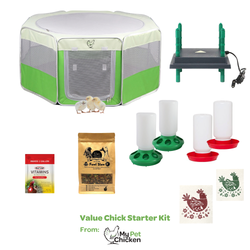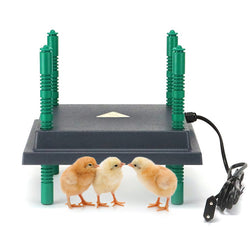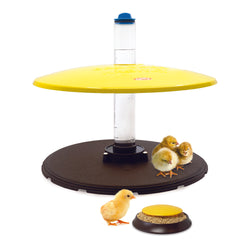
Avian influenza, commonly known as bird flu, is a highly contagious viral disease that affects birds, including poultry and wild birds. While some strains cause little harm, others—like highly pathogenic avian influenza (HPAI)—can spread rapidly and have devastating effects on flocks. Understanding how avian flu spreads and how to protect your birds is essential for poultry keepers, whether you have a backyard flock or a large-scale operation.
What Causes Avian Flu?
Avian flu is caused by influenza Type A viruses, which are classified based on two proteins: hemagglutinin (H) and neuraminidase (N). There are multiple subtypes, but the most concerning for poultry are:
- Low Pathogenic Avian Influenza (LPAI): Causes mild symptoms and often goes undetected.
- Highly Pathogenic Avian Influenza (HPAI): Spreads rapidly and can cause severe illness or death in birds.
The current HPAI strains have impacted millions of birds worldwide, leading to significant concerns in the poultry industry.
How Does Avian Flu Spread?
Avian influenza spreads through direct and indirect contact. Here are the most common ways birds can become infected:
-
Wild Birds: Waterfowl like ducks and geese can carry the virus without showing symptoms and spread it through their droppings.
-
Infected Poultry: Sick birds can transmit the virus through saliva, nasal secretions, and feces.
-
Contaminated Equipment & Clothing: Boots, tools, and vehicles can carry the virus between flocks.
- Airborne Particles: In some cases, the virus can spread short distances through dust or feathers.
Because the virus is so easily transmitted, biosecurity measures are critical for protecting poultry.
How to Protect Your Flock from Avian Flu
-
Limit Contact with Wild Birds – Keep your flock’s food and water covered, and prevent wild birds from accessing coops or runs.
-
Practice Good Biosecurity – Clean and disinfect equipment, change shoes before entering the coop, and wash hands after handling birds.
-
Restrict Visitors – Reduce traffic to your flock and avoid contact with other poultry farms.
- Monitor Bird Health – Watch for signs of illness and act quickly if you notice anything unusual.
The USDA’s conditional approval of an HPAI vaccine developed by Zoetis represents a potential new tool in the fight against this devastating disease. At this time the vaccine can only be used under strict government mandates, primarily for large-scale egg and meat producers. The vaccine must still undergo further evaluation and receive final USDA approval before it can be widely distributed.
Symptoms of Avian Flu in Chickens
The severity of symptoms depends on the virus strain. Some birds may show no signs, while others become severely ill. Common signs of HPAI include:
-
Swollen head, eyes, or neck
-
Sudden drop in egg production
-
Nasal discharge or difficulty breathing
- High mortality rate in affected flocks
If you suspect avian flu in your flock, it’s essential to report it to your local agricultural authority and follow biosecurity protocols immediately.
What to Do If You Suspect Avian Flu?
If you see signs of avian flu in your flock, take action immediately:
-
Report It –
If you suspect illness in your flock, contact your local veterinarian, state agricultural department, or the USDA hotline at 1-866-536-7593.
-
Isolate Sick Birds – Separate any potentially infected birds from the rest of your flock.
- Strengthen Biosecurity – Increase disinfection efforts and limit movement in and out of your coop.
Avian flu is a serious disease, but with proper biosecurity and early detection, you can help protect your flock. Stay informed, stay vigilant, and keep your birds safe!



